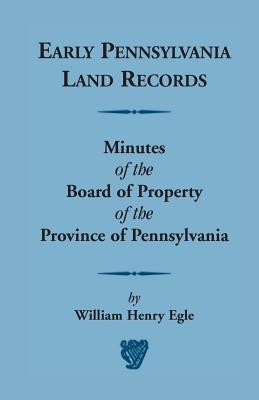
- We will send in 10–14 business days.
- Author: William Henry Egle
- Publisher: Heritage Books
- ISBN-10: 0788422790
- ISBN-13: 9780788422799
- Format: 14 x 21.6 x 4 cm, minkšti viršeliai
- Language: English
- SAVE -10% with code: EXTRA
Early Pennsylvania Land Records Minutes of the Board of Property of the Province of Pennsylvania (e-book) (used book) | bookbook.eu
Reviews
Description
Shortly after William Penn was granted the tract of land known as Pennsylvania by King Charles II in 1680, he began offering 'rights' to a set number of acres for investors. These 'rights' were generally offered in lots of 5,000 acres, but 'rights' for smaller tracts were allowed, the minimum purchase size being 250 acres. The purchaser would receive a warrant in exchange for his money. This warrant provided proof of his right to select a tract of land of specific size, not already claimed, once he arrived in America. Once suitable land was located, the purchaser then applied to the Surveyor General for a survey, which once completed enabled the purchaser to apply for a patent, when he could afford the fee. Originally published as Volume XIX of the Second Series of the Pennsylvania Archives in 1893, this work contains the Minutes of the Board of Property beginning with Book C, which is believed to be the earliest legible collection of property records, and continuing on through Book I. Covering the time frame from March 13, 1687 through March 30, 1732, this 2 volume set is essential for anyone wishing to research early Pennsylvania genealogy. For each property the board assesses in these records, a history of the tract is given, providing a considerable amount of genealogical information about the family who owned the land. The original surname index has been included.
EXTRA 10 % discount with code: EXTRA
The promotion ends in 21d.18:15:40
The discount code is valid when purchasing from 10 €. Discounts do not stack.
- Author: William Henry Egle
- Publisher: Heritage Books
- ISBN-10: 0788422790
- ISBN-13: 9780788422799
- Format: 14 x 21.6 x 4 cm, minkšti viršeliai
- Language: English English
Shortly after William Penn was granted the tract of land known as Pennsylvania by King Charles II in 1680, he began offering 'rights' to a set number of acres for investors. These 'rights' were generally offered in lots of 5,000 acres, but 'rights' for smaller tracts were allowed, the minimum purchase size being 250 acres. The purchaser would receive a warrant in exchange for his money. This warrant provided proof of his right to select a tract of land of specific size, not already claimed, once he arrived in America. Once suitable land was located, the purchaser then applied to the Surveyor General for a survey, which once completed enabled the purchaser to apply for a patent, when he could afford the fee. Originally published as Volume XIX of the Second Series of the Pennsylvania Archives in 1893, this work contains the Minutes of the Board of Property beginning with Book C, which is believed to be the earliest legible collection of property records, and continuing on through Book I. Covering the time frame from March 13, 1687 through March 30, 1732, this 2 volume set is essential for anyone wishing to research early Pennsylvania genealogy. For each property the board assesses in these records, a history of the tract is given, providing a considerable amount of genealogical information about the family who owned the land. The original surname index has been included.


Reviews